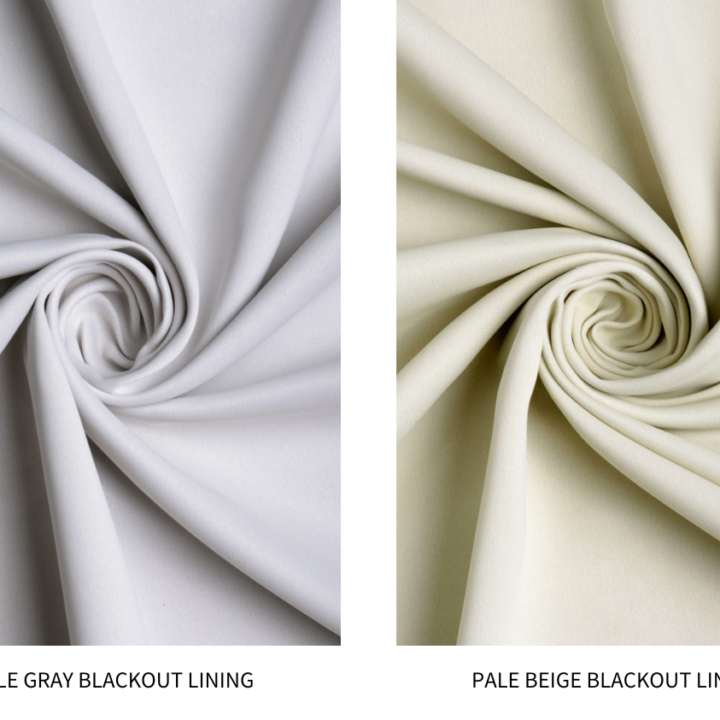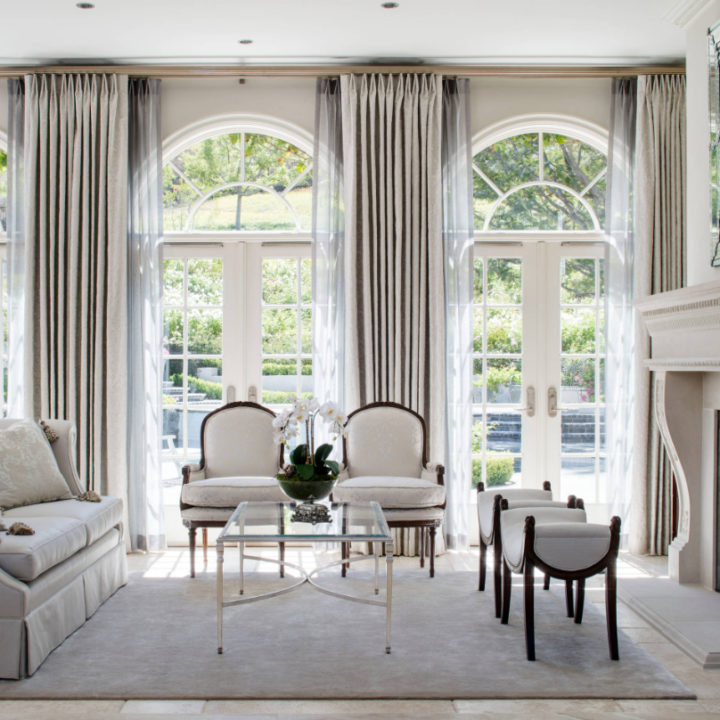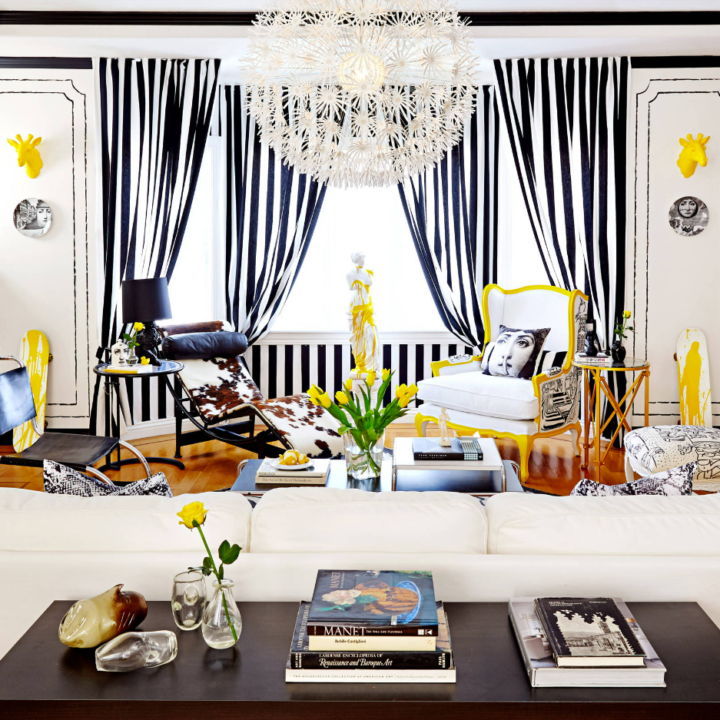Spiffy Speak
WHAT IS THE BEST FABRIC FOR CURTAINS & DRAPES?
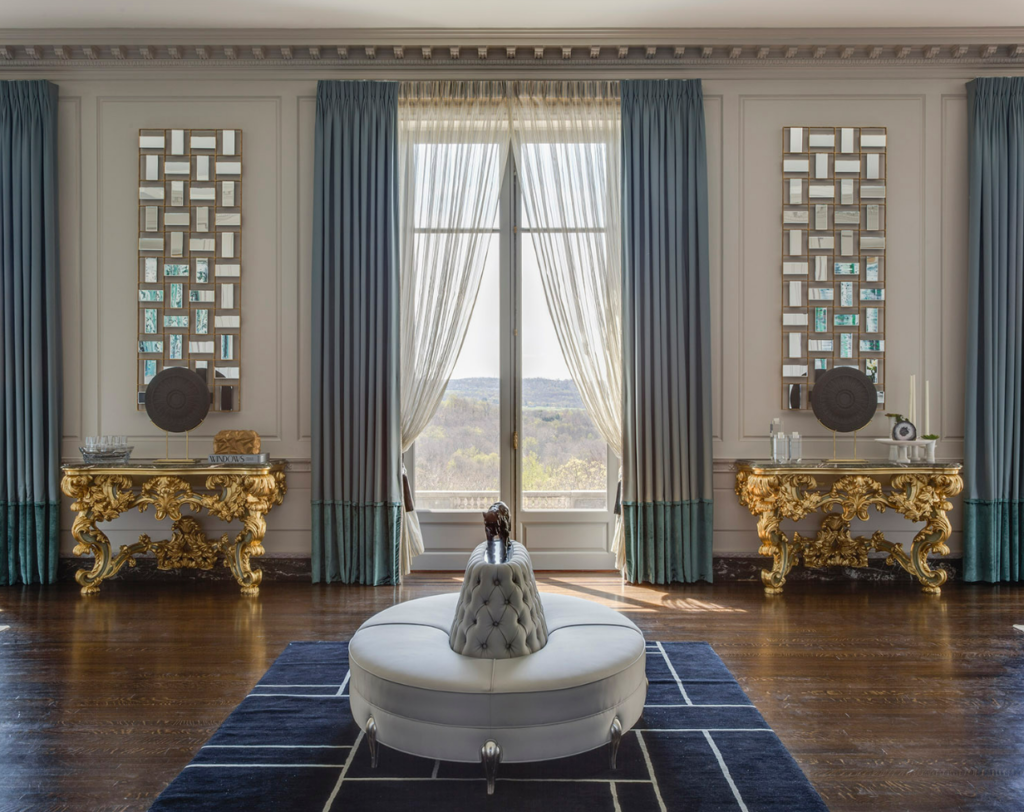
One of the top reasons homeowners opt for curtains is their vast scope of customization – the type of fabric to begin with. From regal silks to cozy linens, the choice spectrum is endlessly expansive. While being able to choose the fabric is empowering, the responsibility to make the right choice solely falls on the homeowner.
If you’ve decided to adorn your windows with curtains and drapes, one of the first questions that’ll hit you is, ‘What’s the best fabric for curtains?’ Each yarn and weave has unique traits and blended yarns give nuances to their functionality. So, how can you find out the best drapery fabric for your home? If you’re tenaciously foraging for the answers, this blog post might be your one-stop guide.
Order custom curtains and drapes from Spiffy Spools online in any size. Pick from over 3,000 fabrics and patterns!
Qualities of a Good Drapery Fabric
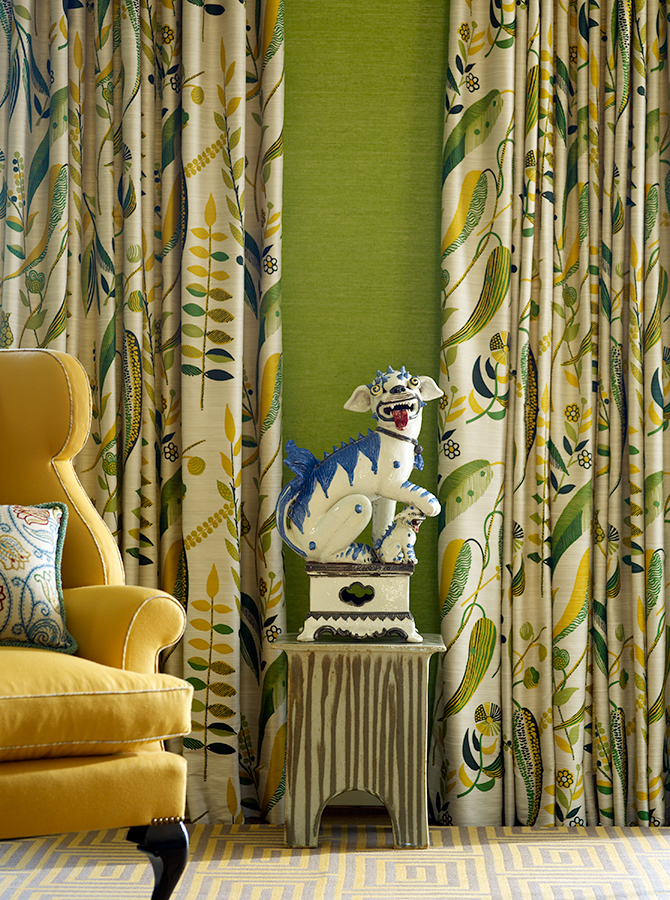
While all fabrics have qualities we may like or dislike, it is important to distinguish drapery fabrics from the rest. These fabrics are designed to ‘drape’ well and meet the needs of window coverings. What defines a fabric as a good drapery fabric are these five must-have qualities:
- DRAPABILITY: The first and foremost quality a drapery fabric needs is the capacity to be draped. Two factors that determine the drapability of a fabric are its weight and flexibility. As compared to light flimsy fabrics, heavy-weight fabrics drape better as they can hold the pleats in their place, retain creases, and fall straight down due to their own weight. The flexibility/softness of the fabric is related to the flexibility of the fiber, the thread count, and the weave. If the cloth is too stiff, it cannot be bent at the desired intervals to form the pleats. Since the beauty of curtains lies in their sumptuous pleats and free-flowing shapes, the pliability of the fabric is key to a good drapery fabric.
- DURABILITY: No one buys curtains with every passing year; they are usually meant to last a lifetime. So, durability is an inevitable factor, no matter how gauzy or dense the fabric you select. Aside from the usual wear and tear, the curtains must be able to withstand sunlight, winds, humidity, and routine cleaning cycles with endurance.
- NON-STRETCHABILITY: The curtains must retain their tailored shape for their lifetime. You don’t want them to droop with protruding edges at the bottom or slump from the drapery pole miserably. Hence, you need to select fabrics with low elasticity and high dimensional stability.
- SHRINK RESISTANCE: Being able to find or stitch curtains to stop at the exact drop you wish to achieve is in itself a challenge. And then, what if they shrink, rendering your meticulous styling wasteful and jeopardizing the look of the room? Drapery fabrics must ideally be pre-shrunk, and resist shrinking when exposed to water and moisture. Otherwise, with the first wash, you’ll find your curtains getting shorter, unless you dry-clean them.
- COLOR FASTNESS: Curtains are an incredibly reliable medium to highlight your color palette and overall decor style. But, if your fabric is not colorfast, you’ll find in due time that they mismatch your room’s decor, and how heartbreaking that would be! Besides, if they appear washed out instead of their original high-saturated finish, they may not suit decor styles that feature polished finishes. So, look out for fabrics that retain their charm and color when faced with the blinding sun and its scorching heat.
Any fabric that fares well in the above-mentioned aspects qualifies as a good drapery fabric. Depending on the climate, the purpose of the room, aesthetic preferences, and other factors, you might also want to look out for these bonus attributes:
- BREATHABILITY: Window treatments are meant to regulate light and provide privacy. They should not in any way oppose the window’s function of providing an outlet for odors and an inlet for fresh air. Hence, it is important to find breathable fabrics that allow air circulation even when the curtains are drawn. So the moisture, gasses and odors that are generated within the house find their way out, and fresh air trickles in continuously. This is especially important in small spaces that can get stuffy very quickly.
- QUICK-DRYING: If you plan to wash your curtains in water, it is important to find drapery fabrics that dry fast. It is especially required for curtains in kitchens, bathrooms, and laundry rooms as they are highly humid, and accidental splashes are not uncommon here. Fast-drying enables the curtains to resist mold formation and shrinking and stretching when exposed to moisture often.
- TEXTURAL RICHNESS: If you want your curtains to convey a feeling of coziness, warmth, and luxury, ensure that they are multi-dimensional and tactile to the touch. A flat surface gives off a cold appeal while a texturally rich finish comes across as a thoughtfully laid-out detail that dramatizes the play of light and shadow in minuscule scales. If you do not want to introduce patterns through your drapes, make sure you don’t miss on bringing textural variety as they evoke interest with subtlety.
As you went through this list, you might have realized that selecting the right drapery fabric is as much about getting the best base materials as getting the fondest palette or patterns. Don’t fret though, because many fabrics that you see in drapery fabric stores fulfill these prerequisites. But, each fabric fares on the various parameters detailed above with varying degrees, making them more suitable to certain spaces, locales, and purposes. Hence, we will now evaluate each fabric for you based on the parameters laid out for good drapery fabrics.
Evaluating Drapery Fabrics on Well-Defined Parameters
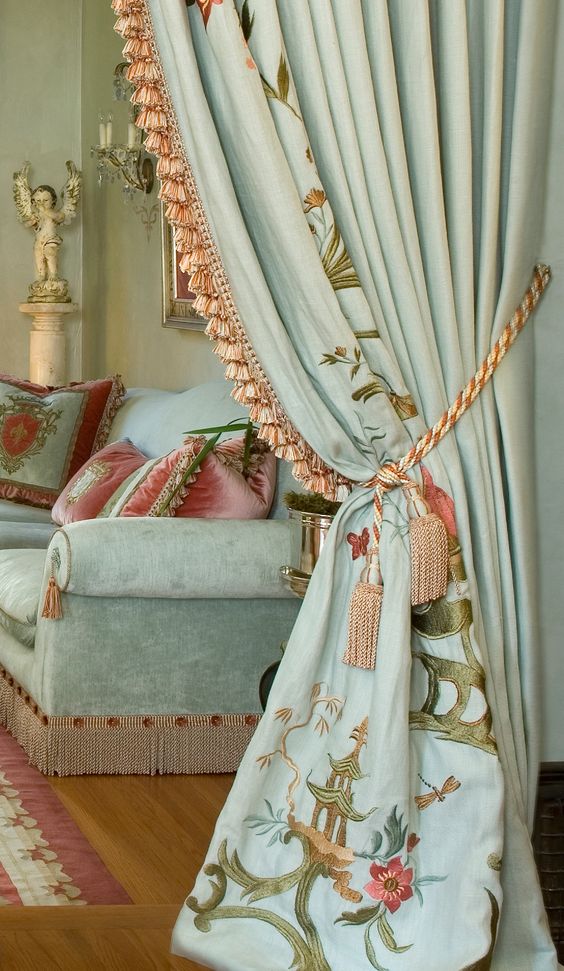
Drapery fabrics speak to the style of your home – its architecture, decor style and overall feel. Once you finalize the fabric, you can dress the curtains up or down depending on the kind of vibe you’re aiming to forge. So, let’s evaluate each of the drapery fabrics based on the qualities that make them a good fit for drapery.
COTTON
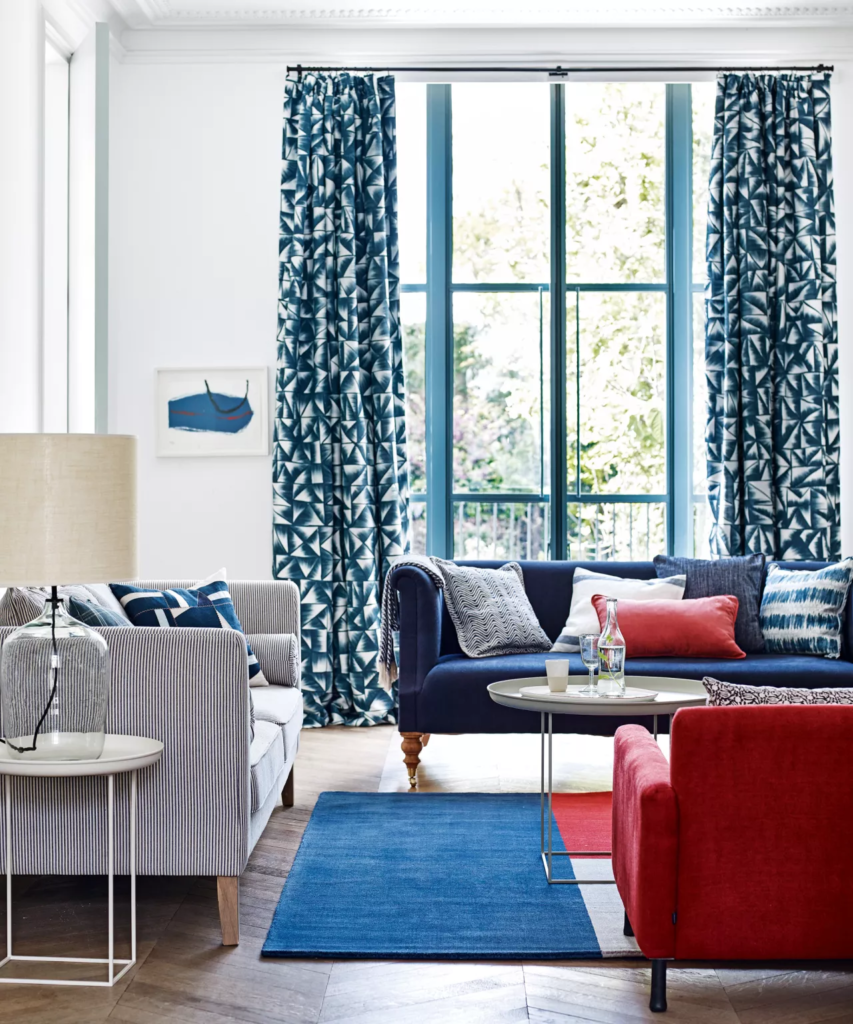
Made from the seedpods of cotton plants, cotton comes in various types of weave and is one of the most popular curtain fabrics worldwide. Cotton voile, muslin, and organdy are some of the semi-transparent cotton fabrics used for curtains. The non-sheer category includes cotton fabrics like chambray, canvas, twill cotton, cotton duck, sateen, calico, velveteen, and corduroy.
Cotton fabric is natural, breathable, and hypoallergenic – making it one of the best finds for the sustainability-conscious and chemical-sensitive. They can last a lifetime and hold their shape forever, just as they did when they were new. Unless the label mentions dry-clean as the only option, most cotton curtains can be washed at home or just vacuum cleaned.
Cotton curtains and drapes are suitable for semi-formal and casual settings. Whether you want a textured or polished finish, in solids or patterns, cotton can satisfy your wishlist and be dressed up or down depending on your decor style.
Pure cotton curtains, however, should be backed with suitable lining for it is not colorfast, and bright colors are especially prone to fade under the direct sun after long use. Also, it is advisable to pick a medium to heavy-weight cotton for the best drape and tailored finish.
SHOP NOW: CUSTOM COTTON CURTAINS & WINDOW DRAPES
LINEN
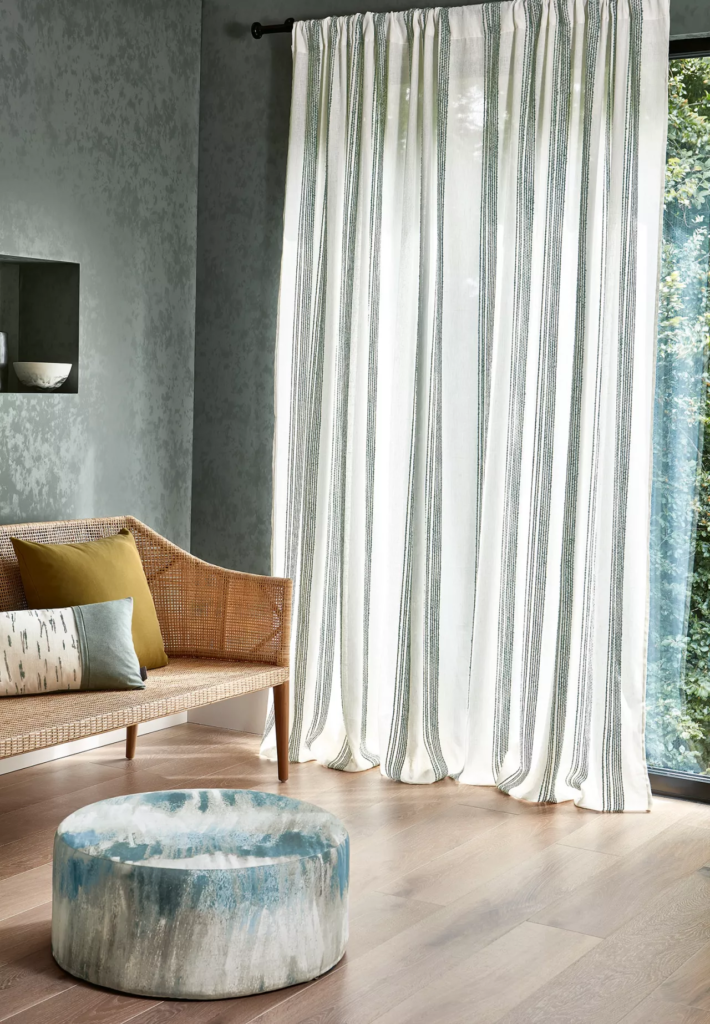
Second, on our list is another popular natural fabric – linen – made of flax plant fiber. It is also breathable, hypoallergenic, and biodegradable. And it is not just durable but also, surprisingly, gets softer with age and every wash.
Linen comes in various types of weaves, both in solids as well as patterns. Loose-woven linen curtains are ideal for light-filtering and even the tight-knit ones don’t block light altogether. Both, tight-knit and loose-knit linen curtains help to keep the home fresh as they allow air circulation.
Linen curtains require no professional help to be maintained. They can be machine-washed and ironed at home unless specified for ‘dry clean only’ in the product details. Those who don’t particularly enjoy the chore of ironing their drapes can celebrate linen’s wrinkled texture as well as their laziness. In fact, that crumpled look is linen’s biggest and most unique asset.
Linen is most loved for its slubby weave, rich textured finish, and natural crinkliness. Its lived-in feel makes for a relaxing addition to any casual space, especially in kitchens and bedrooms where linen dominates in the sheets, tea towels, and sleepwear.
However, pure linen does not work as the best choice for curtains in some situations. It is highly absorbent and loses its dimensional stability when it comes into contact with moisture. It may stretch when wet and shrink when dry, making the finished length of the curtains unpredictable in moisture-prone spaces. The solution is to go for linen blends or puddle your curtains so that this difference in length will go unnoticed.
Linen can shed color mildly when exposed to strong sunlight for very long. But the effect is almost hard to notice on light-colored ones; in fact, white linen gets more sparkly and refined when exposed to the sun.
Responsiveness to nature and roll-out-of-bed looks of linen may antagonize some but they are impressive finds for wabi-sabi fans who integrate that natural beauty into their home’s design with forethought. Linen curtains are a classic choice and blend well with traditional and contemporary decor styles.
SHOP NOW: CUSTOM LINEN CURTAINS & WINDOW DRAPES
POLYESTER

Polyester is made of synthetic fibers, usually processed from petroleum. Compared to most natural fabrics, it is lightweight, durable, and economical. It is a quick-drying fabric that can be easily washed and maintained at home.
High-quality polyesters hold their structure well and neither stretch nor shrink when exposed to water or moisture. Their colorfastness enables them to look fresh even after long use and repeated cleaning sessions. Therefore, polyester curtains are going to be durable additions to your home decor.
They come in varying densities, weaves, and qualities which makes them an enticing option both for the spendthrift and the budget-conscious. It is noteworthy that many high-quality polyesters come across as natural fabrics to the eye due to their rich texture. The low-quality ones look cheap and their non-tactile surface can often make a space look bland and uninviting. Therefore, it is important to choose the quality carefully when choosing polyester for drapery.
Polyesters can trap smells easily, making them the last option for small and poorly-ventilated spaces. They block airflow and must be left open during the day so that fresh air can be let in. If you do not plan to operate your curtains often in kitchens and bathrooms, it is better to avoid polyester as air circulation is key in these humid spaces of the home. Besides, it is highly inflammable, worsening the scenario in case of a fire, making them not the best fit for kitchens despite its stain-resistant, fast-drying qualities.
POLY BLENDS
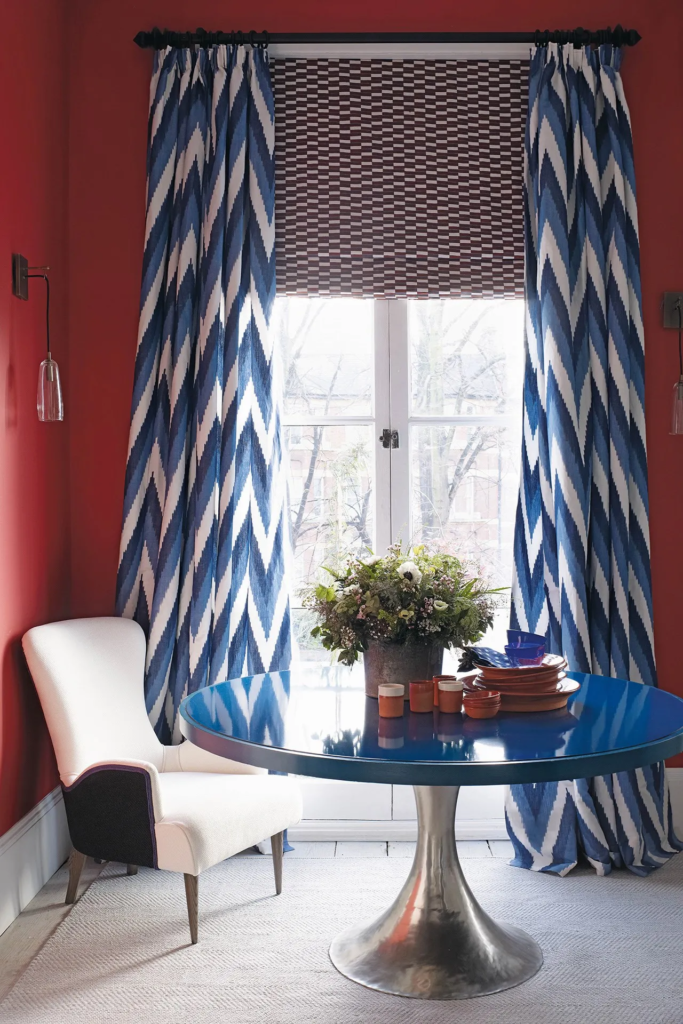
Blends refer to fabrics that are woven by combining two fabric yarns so that each can set off the negative attributes and enhance the positive attributes of the other. Poly blends are a combination of natural and polyester fibers resulting in various types of fabrics such as terrycot, polycotton, and linen blends.
As compared to natural fabrics, poly blends have more dimensional stability, fast-drying capacity, and colorfastness. In some cases, the addition of polyester and terylene fibers serves to make cotton and linen smoother, hardier, and more opaque. Therefore, these are the most practical solution for those who love natural drapery fabrics but need to have them more refined and upscaled to suit their purposes and climatic conditions.
VELVET

This is a luxury fabric that used to be made of pure silk in earlier years. These days, velvet fabric is made of silk blends, cotton, polyester, nylon, viscose, or rayon. It is a woven tufted fabric characterized by a dense pile of evenly cut fibers with a smooth nap.
The thick weave and plush naps make velvet curtains excellent insulators and light blockers. They can work as room-darkening and sound-absorbing curtains even if left unlined, making them good suitors for bedrooms, nurseries, and media rooms.
Velvet is a heavy-weight fabric, perfect for long drapes in formal, dressed-up spaces. If the windows are oversized, it is better to use this fabric to design stationary, decorative drapes as they can be cumbersome to operate.
Owing to the textured finish of the fabric, it is prone to attract lint and dust, making its maintenance a tedious task. The thick makeup of the fabric also makes it slow drying and highly susceptible to mold formation in wet areas and humid locales.
SHOP NOW: CUSTOM VELVET CURTAINS & WINDOW DRAPES
SILK
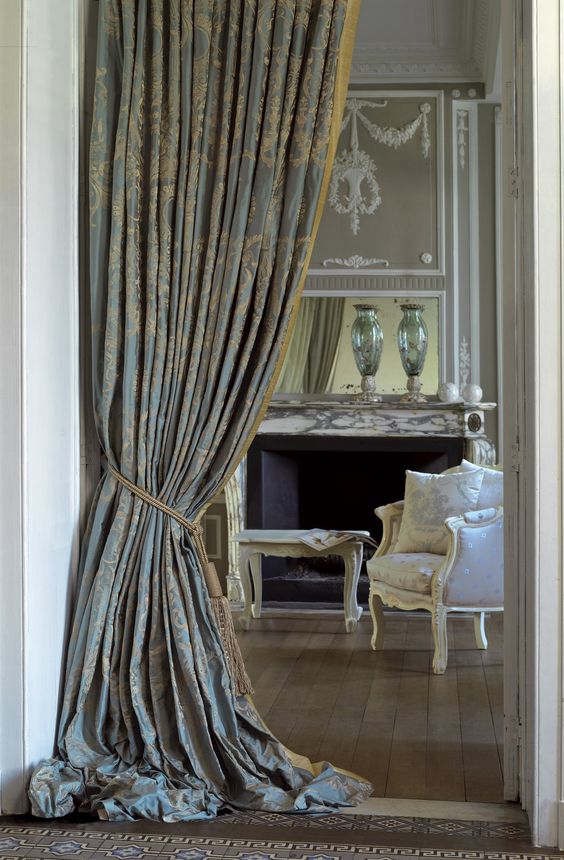
Another luxury fabric suitable for curtains is silk. It is made of a protein called fibroin collected from the cocoons of silkworms. Its lightweightedness, softness, and natural luster make it fit for ultra-formal dressy spaces. And since it is natural and breathable, it never blocks out fresh air from the room.
Pure silk curtains are the epitome of luxury owing to their limited availability and labor-intensive and costly production process. But, the regal appeal of silk is not owed to its hefty price tag or exotic origin as to its effortless resplendence. Silk refracts light from different angles at the same time. The sheen and the delicacy work together to make silk curtains the ornaments of the space they adorn.
Silk curtains may be put to their best use as decorative accessories as they easily shed their sheen and hue when exposed to the sun for long hours. Therefore, it is necessary to line and interline these curtains to minimize sun damage. Silk is also extremely reactant to water and retains the stains forever. Hence, silk curtains are unsuitable for humid and moisture-ridden spaces.
Additionally, this pricey fabric also gets wrinkled easily which may fall out of taste for those who like their space to always feel neat and fresh all the time. But for those who love that tell-tale sign of an opulent but lived-in home put to its best use, this factor only makes silk more tempting.
SHOP NOW: CUSTOM SILK CURTAINS & WINDOW DRAPES
FAUX SILK
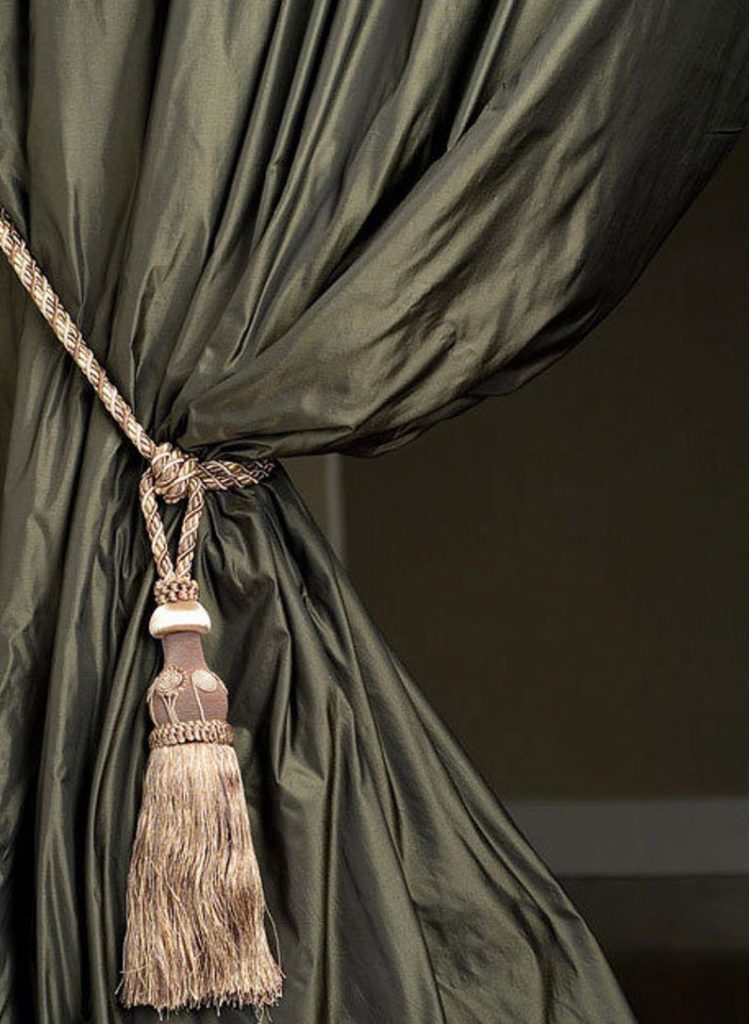
Those who love the royal look of silk but shrug at its maintenance issues may try faux silk. As the name suggests, this fabric looks and feels like silk, but is actually made of polyester. Needless to say, it goes in the opposite direction on the price scale as compared to real silk. Besides, faux silk can handle sunlight, humidity, and water without giving you any maintenance headaches, unlike real silk.
Since it looks like silk, it is a replacement option for all those spaces where silk curtains could have done a fab job. So, ultra-formal living rooms and designer guest bedrooms may be ideal spaces for faux silk drapes. But, since they eliminate all the maintenance issues that silk poses, they become capable of adorning any room in the house that can profit from its sophisticated looks and lustrous glamor.
How to Decide Which One is Right for You?
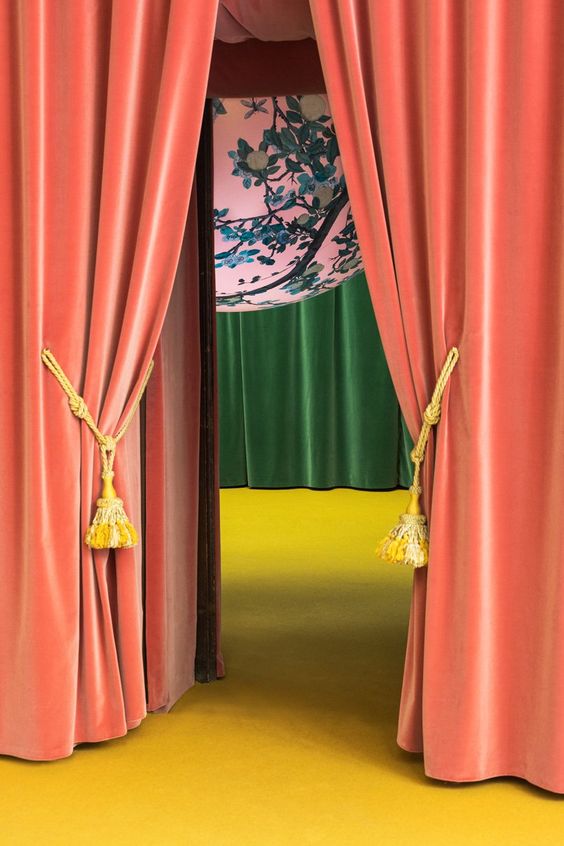
Now you know that no one fabric may be called ‘the best’, but ‘the best for a given purpose’’. Which fabric suits best for the curtains in your home depends on various factors including visual appeal, climatic conditions, maintenance issues, budget, and the purpose of the space, to name a few. In fact, you may need to take recourse to different fabrics for different spaces and rooms in your home.
Here, we lay out the parameters for you to take your decision with ease:
NATURE OF ROOM
The purpose of the room will perhaps have the loudest say in the selection of fabrics for curtains. Kitchens and bathrooms may need special considerations about quick drying and dimensional stability. Lightweight cotton and linen blends with a higher percentage of polyester or pure polyester fabrics are the best choices for bathrooms. They can dry faster and run a lesser risk of getting moldy. Cotton and linen blend fabrics with a lower percentage of polyester are better suited to kitchens. The aim is to not let your kitchen and adjoining areas be heavy with tangy cooking odors and to reduce risks of fire hazards.
DECOR STYLE
Fabric choice for curtains hinges highly on the look you are aiming to create for your home and its overall decor language. If your decor style is committed to natural elements like stone, wood, and wicker, as in Balinese or Scandinavian styles, natural fabrics are the default choice. For a very informal decor style such as boho or shabby chic, have no second thoughts about the homeliness of slubby linen curtains. Whereas, for very polished decor styles like Hollywood regency or dark academia, you need posh fabrics like velvet and silk for your windows.
FUNCTIONAL OR DECORATIVE
Fabric decisions can be made easily if you have crystal clear discernment about the purpose of your curtains. Are your curtains going to be full-on functional in controlling light and providing privacy? Or, are they meant to flank the windows just to add softness and oomph?
Statement fabrics like pure silk, brocade, and velvet are fitting for decorative drapes that are meant to add charm without shouldering any responsibility. Whereas, cotton, linen, polyester, and polyblends are great choices for fully functional drapes as they are lightweight, hardy, and durable.
MAINTENANCE MATTERS
Maintenance of curtains generally involves routine vacuuming and annual washes/dry cleaning. They also have to be ironed before being hung after every wash. Occasionally, they can be steamed to maintain their crisp folds and graceful fall. Over and above this regimen, certain fabrics are more demanding than others.
Velvet attracts lint and dust easily while linen needs to be steamed more often than other fabrics if you want them to look very refined. If you want to reduce maintenance issues, choose fabrics that can pull off a good look with minimum care such as cotton, polyester, and poly blends.
BUDGET
Sometimes, even though you need a high-end look you may be constrained by a shoestring budget. Applying the high-low principle, you can go for curtain fabrics that meet your design aesthetics without weighing down on your pockets. For example, until you can invest in a set of exotic pure silk curtains, be happy with faux silk curtains that give similar visual appeal.
The Bottomline
We hope that the drapery fabric choice issue that seemed like a conundrum has fizzled down to a piece of cake. More choices are a great thing to have only when you have the knowledge to select the best one for you. And, we were striving thus far to empower you to make your decision with confidence. But should you have questions still, know that we are just a call away and Spiffy Spools’ curated collection of drapery fabrics is waiting to gratify your deepest home decor aspirations.
READ MORE: WHAT IS THE BEST FABRIC FOR ROMAN SHADES?

